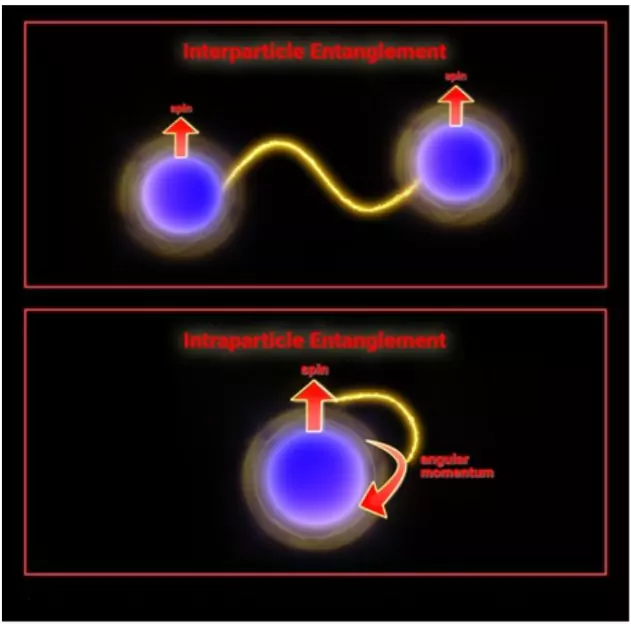Recently, new research by Raman Research Institute reveals that quantum noise, once seen as a threat to quantum systems, can preserve or even generate intraparticle entanglement, challenging traditional views on decoherence and quantum stability.
About Quantum Noise

- Definition: Quantum noise refers to the inherent, unavoidable fluctuations in physical systems at the quantum level, fundamentally limited by the Heisenberg Uncertainty Principle.
- Heisenberg Uncertainty Principle: Formulated by the German physicist and Nobel laureate Werner Heisenberg in 1927, the uncertainty principle states that we cannot know both the position and speed of a particle, such as a photon or electron, with perfect accuracy.
- Sources of Noise:
- Intrinsic (Fundamental):
- Vacuum Fluctuations: Inherent random energy changes even in empty space.
- Shot Noise: Fluctuations due to the discrete, random arrival of particles.
- Extrinsic (Environmental & Instrumental):
- Thermal fluctuations, electromagnetic interference, mechanical vibrations.
- Imperfections in quantum gates, crosstalk, and instrumentation noise.
Types of Quantum Noise Explored in Research
- Amplitude Damping: Represents energy loss in the system (e.g., an excited state decaying).
- Phase Damping: Disrupts critical phase relationships for quantum interference.
- Depolarizing Noise: Randomly alters the quantum state in all directions, causing a loss of superposition and entanglement.
Intraparticle vs Interparticle Entanglement
- Intraparticle Entanglement: Occurs within a single particle—for example, between a photon’s spin and polarization.
- Key Finding: Intraparticle entanglement can survive, revive, or even be generated under certain noise conditions.
- Interparticle Entanglement: Occurs between two distinct particles.
- Key Finding: This form of entanglement degrades irreversibly in the presence of the same quantum noise—highlighting the unique resilience of intraparticle systems.
About Quantum Entanglement
- A quantum phenomenon where two or more particles become interconnected, meaning their individual quantum states cannot be described independently, even when separated.
- Measuring a property of one entangled particle instantly influences the other, a concept Einstein called “spooky action at a distance.”
- Particles become entangled through interaction or conservation laws. Before measurement, entangled particles exist in a shared quantum state (superposition). Upon measurement of one, the state of the other is instantly determined, demonstrating the non-local nature of quantum mechanics.
Basic Example of Entanglement
- A photon hits a 50-50 beam splitter → enters a superposition of:
- Photon in path A, none in B
- Photon in path B, none in A
- Until measurement, it’s in both states simultaneously.
- Measuring one path affects the probability of finding the photon in the other, even over large distances.
How Quantum Entanglement Works?
- A light source emits two photons simultaneously.
- The polarizations of both photons are entangled — they may be random individually, but always match each other.
- Polarization: Direction of oscillation of the electric field in a light wave (e.g., vertical, horizontal).
|
Significance of the Discovery
- Paradigm Shift: Reframes noise not only as a destructive force but as a potential constructive agent in quantum systems.
- Decoherence Resistance: Intraparticle entanglement’s ability to withstand and regenerate in noisy environments paves the way for more stable quantum technologies.
- Quantum System Design: Offers new frameworks for quantum communication, quantum computing, cryptography, and error correction, using noise-resistant architectures.
- Cross-Platform Validity: The findings are platform-independent, applicable across photons, neutrons, trapped ions, etc., owing to the global noise model used—which considers the particle as a whole rather than isolated components.
![]() 16 Jul 2025
16 Jul 2025


